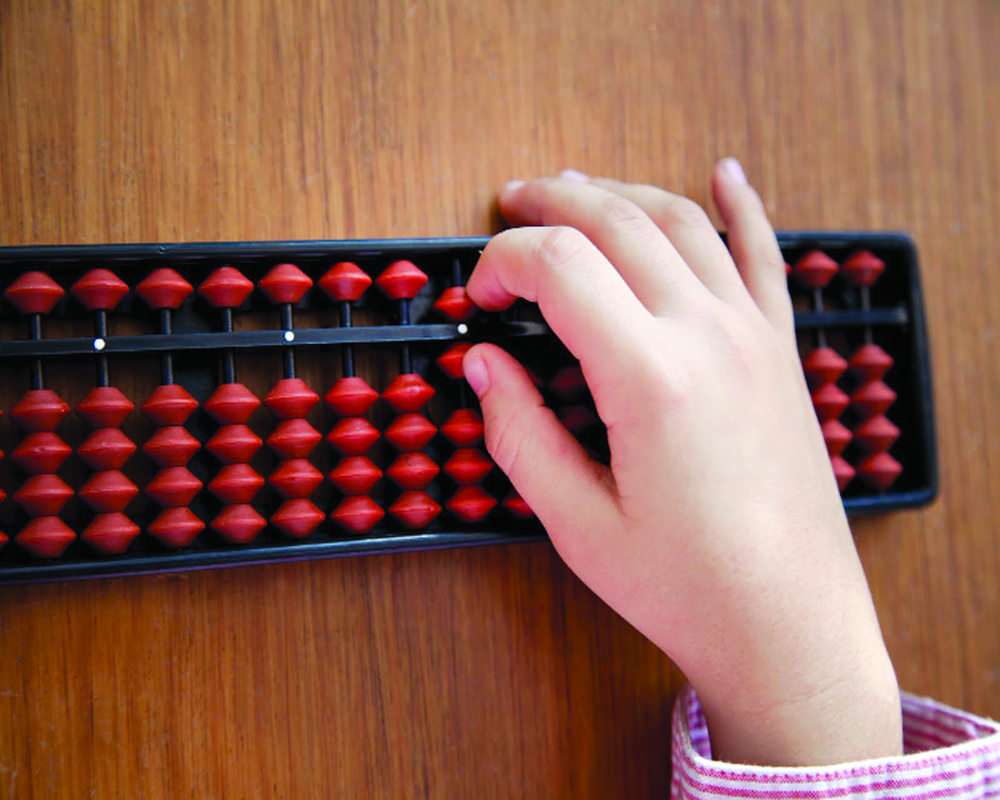
History of abacus
As a calculating tool, abacuses, or counting frames, have been used since ancient times. It was used in the ancient Near East, Europe, China, and Russia, centuries before the adoption of the Hindu-Arabic numeral system.
In India
The Abhidharmakośabhāṣya of Vasubandhu (316-396), a Sanskrit work on Buddhist philosophy, says that the second-century CE philosopher Vasumitra said that "placing a wick (Sanskrit vartikā) on the number one (ekāṅka) means it is a one while placing the wick on the number hundred means it is called a hundred, and on the number one thousand means it is a thousand". It is unclear exactly what this arrangement may have been. Around the 5th century, Indian clerks were already finding new ways of recording the contents of the abacus. Hindu texts used the term śūnya (zero) to indicate the empty column on the abacus.
Uses of abacus
Sharpen observational skills
As a child handles the beads of the frame with his/her fingers and sets them up to make calculations, they develop better observational skills. As a result, they can examine situations and reach a more firm conclusion. WAbacus is primarily taught through flashcards; kids are required to look at the cards, remember the numbers on them, and make calculations accordingly. This greatly improves the observational skills in kids, enhancing memory retention in them.
Boosts confidence
Better performance at arithmetic accounts for a boost in confidence level and nurtures one’s analytical and problem-solving abilities as well. A child seems to be more interested in the subject. Besides, the abacus helps students lay a strong academic foundation that fetches them positive feedback from parents and teachers. This, in a way, helps enhance confidence, especially in those kids who earlier felt a lack of self-confidence when solving even simple math equations.
Enhances brain power & cognition
Research suggests that humans generally use the left part of our brains, which allows us to read, write, calculate, etc. Abacus training stimulates the right hemisphere of the brain, which is responsible for creativity and other artistic skills, so math alone isn't enough; it improves overall brain function and cognition. Not just for children, abacuses can be used by everyone!
Helps to Understand Calculations Better
At an early age, most children are encouraged to rote-learn mathematical tables, like multiplication tables. As a result, our little ones find calculations very confusing and difficult.
But, if you use an Abacus, even if they don’t memorize the tables right away, they will definitely understand the explanation behind it.
Abacusus also has many other amazing benefits for toddlers and young children.
Boosts imagination.
Mental math is one of the major reasons behind Abacus' popularity. In fact, the brain development programs of recent times use an abacus to help teach math.
As I mentioned before, practicing mental math requires one to imagine the abacus and the numbers in their mind. As a result, the repetitive abacus exercise stimulates kids' imagination, thereby enhancing their creativity.
Thus, abacus play a significant role in broadening the imagination of young children.
